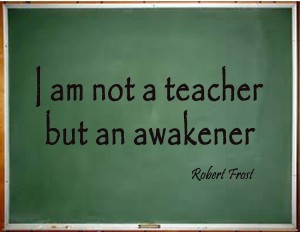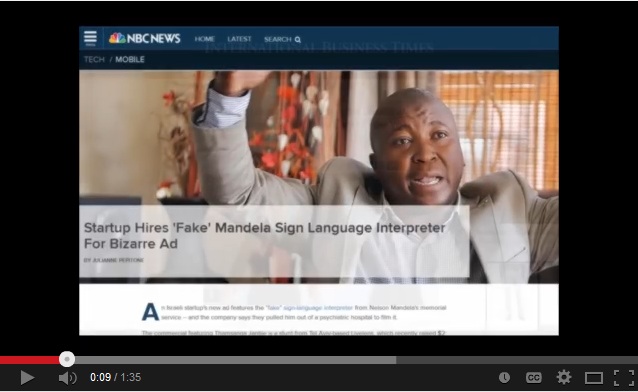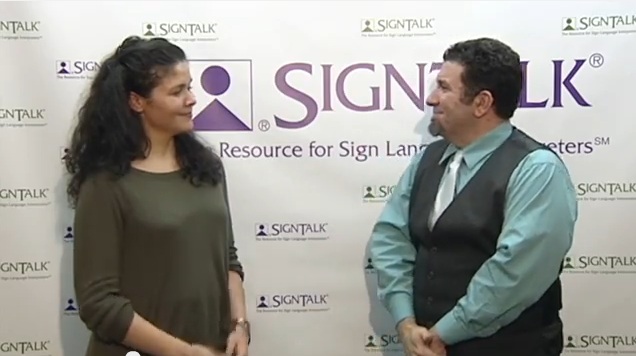You Are Not a Teacher
By Amber Ceffalio, NIC
Last time we discussed the vast array of interpreting models an educational interpreter toggles through each day. Now, let’s discuss what an educational interpreter does not do.
You are not a teacher.
Yes, you’ll take on minor roles in which you impart information. Your student, for example, might ask you–not wanting to ask the teacher–if the next step in the math problem is to divide. OK, go ahead and answer their question.
Confirming for the student that they’re on the right path is different than big picture teaching. Here is where the roles of teaching and interpreting diverge.
A Teacher’s Role
Teachers have responsibilities that interpreters don’t have. Teachers walk into their classroom each day with specific information they wish to impart. Teachers prepare, teach, and assess the students’ understanding of that lesson. Teachers may adjust their lessons based on their assessment of a students’ comprehension.
On top of that, teachers enforce the rules of the school and are held accountable to the school administration.
An Interpreter’s Role
 Interpreters interpret the teacher’s lesson. The interpreter assesses the Deaf students’ understanding of the interpretation, which is subtly, but vitally, different from the teacher assessing the students’ understanding of content.
Interpreters interpret the teacher’s lesson. The interpreter assesses the Deaf students’ understanding of the interpretation, which is subtly, but vitally, different from the teacher assessing the students’ understanding of content.
Ideally the interpreter will be familiar with the content and know the teacher’s goals. But, an interpreter walks into the classroom with less preparation and less responsibility than the teacher.
Outside of interpreting, freelance interpreters aren’t accountable to the school administration. Yes, the interpreter is another adult in the room and needs to behave as such. Yes, the interpreter is a mandated reporter and the health and well-being of a student trumps the Professional Code of Conduct. But, the contracted interpreter isn’t necessarily mindful of the bureaucratic process of handing out bathroom passes while the teacher is. However, one must keep in mind that interpreters employed by the school district need to follow school district rules and protocol.
Complementing the Teaching Process
Interpreters can enhance or hinder the teaching and learning process.
1. First, the interpreter needs to be prepared for class. That may mean the interpreter is reading (or re-reading) To Kill A Mockingbird with the English class. It may mean that the interpreter is researching online what the chemical makeup of sugar looks like so she can interpret the information visually. This is baseline work.
2. Second, the interpreter has some information the teacher doesn’t have. How the interpreter uses this information will either be beneficial or detrimental to the teaching process. Because the interpreter is always looking at the student in order to assess if the student understood the interpretation, the interpreter sometimes catches information the teacher doesn’t.
For example, I was interpreting in a contained math classroom. The teacher was trying to teach a specific concept that was needed to understand future concepts. Frustrated because she’d been trying to get this information across in multiple ways, the teacher asked, “Do you get it now?” Frustrated because she’d been trying to understand but couldn’t, the student nodded. But, when the teacher turned to write the new lesson on the board, the student made a face that told me she didn’t understand the material at all.
What are my options? I’m part of the educational team, but I’m not the teacher. The teacher took the student at her word but not understanding to content now will hurt her later. I felt that the student was almost there and if the material was told one more time in a slightly different way, the student would get it. Yet, I’m not the teacher. I don’t want to be the teacher. And, I don’t want to undermine the teacher.
My solution was to sim-com, “Maybe I didn’t interpret that clearly. Did you mean that XYZ = ZYX?” With that, the teacher looked at me, looked at the student, understood exactly what was happening and said, “Yes, XYZ = ZYX and here is why…”.
 Both the teacher and I saw the light bulb click on in the student’s brain.
Both the teacher and I saw the light bulb click on in the student’s brain.
Problems Come Up
That particular situation worked out because I approached the problem as if I was the weakest link in the educational chain. It also worked because the teacher didn’t have an ego to get around. We both shared a common goal.
Yet, we interpreters have a little bit of diva in us. (Raise your hand if you’ve ever thought, “I know more than this teacher.” We all have our hands up now.)
There are times I’ve crossed the line. The teacher usually points out these times with a sigh or an, “Ok, and getting back to my point…”.
Don’t take over the classroom. Defer to the teacher. She’s the one in charge and she’s the one who will ultimately answer to the school principal.
Discussion
Let’s crowd source educational interpreting. I illustrated one solution to one situation. I’m curious what other interpreters have done. In the comments, please tell us what you’ve done when you’ve noticed a student didn’t understand content but the teacher was moving on with the lesson. Let us know as much information about your situation as you can without compromising confidentiality. Was it was a mainstream or a contained classroom? What grade level? Did you have a rapport with the teacher? The more tools we share with each other, the better we’ll all be as educational interpreters.
Terps Up! Amber










